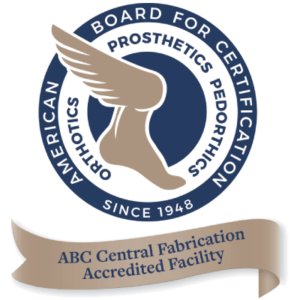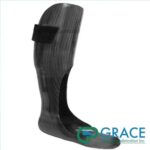Can patients with a prosthetic leg continue to run?
Whenever a patient requires a prosthesis, they’re acutely aware that their life is going to completely change. Luckily, there are many resources — not to mention advanced prosthetics — that make this much easier. One question that doctors often get from active patients is, “Can you run with a regular prosthetic leg?” Let’s start the discussion with a few elements that can determine how well a patient will be able to run:
Potential/Activity Level
To paraphrase a common joke:
Patient: “Doc, will I be able to run a marathon with my prosthetic?”
Doctor: “Of course you will.”
Patient: “That’s great. I’ve never been able to run a marathon before.”
The point is clear: the ability of a patient to run on a regular prosthetic leg will greatly depend on his or her previous and potential activity level. If they were a runner prior to their amputation, then that will definitely help them return to the same activity, albeit altered. Or if they choose to start getting into better shape after the prosthetic has been put in place, this will change their potential activity and need for the prosthetic to perform.
Prosthetic’s Components
Whether or not a person can run with a regular prosthetic leg will also depend on the components of the prosthesis. High-quality components can take a great deal of stress, which would be necessary for the constant movement and pounding on the pavement or other surface. The same goes for the quality of the materials used to make the socket.
Socket Comfort and Suspension
Speaking of the prosthetic socket, this is an essential component when running with a regular prosthetic leg. If the socket hasn’t been properly fitted, then attempting to run with the prosthetic could cause the skin to chafe or become badly irritated. Working with a reputable socket designer that uses 3D printing will help curtail any potential problems.
Below-Knee vs. Above-Knee Prosthetics
Another factor that can determine if running with a prosthetic leg is feasible is whether the patient has a below-knee or above-knee prosthetic. As a general rule, a below-knee prosthesis is typically easier to run in, assuming that the patient could run well with two natural legs.
With an above-knee prosthesis, it can depend on the patient’s extension control. Also, on a side note, kids will often run despite what type of amputation has been done because they simply don’t care and are surprisingly (or not so surprisingly) more resilient.
How Running Blades Differ from a Biological Limb
A lot of people inquire about the use of running blades and how they differ from a biological limb. If you decide to use a running blade, this is important to know because your running tactic will be different.
Running blades work by storing energy as they support the runner’s weight. The energy is then released as the runner pushes off the ground. This is similar to the way a leg’s calf muscles and tendons work. The difference between these two is that a biological foot generates its own energy with the use of muscle fibers.
Is a Regular Prosthetic Leg or Running Blade Better?
There’s been a lot of fanfare around running blades because that’s what you see people using in the Paralympics and sometimes in marathons. For the general prosthetics patient, however, most are much better off running with a regular prosthetic leg. In most cases, patients who are either adept at running or new to the activity can strengthen up their body and learn how to properly run with the help of a trainer or advice from their doctor.
Contact Grace for a Prosthetic Leg Socket Design
Grace Prosthetic Fabrication will develop a high-quality prosthetic leg socket that patients can use for running and other activities. If you have any questions about our services or products, give us a call at (800) 940-5347 today and recommend that you want Grace to make your prosthetic when you visit your specialist.






